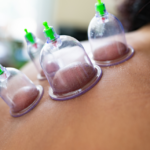How is Hijama beneficial for Headaches? Hijama, also called cupping treatment, is an ancient form of alternative medicine that has been used for hundreds of years to treat a wide range of illnesses, including headaches. Cups are used in this treatment to create a vacuum on the skin. This draws blood and other fluids to …
How is Hijama beneficial for Headaches?
Hijama, also called cupping treatment, is an ancient form of alternative medicine that has been used for hundreds of years to treat a wide range of illnesses, including headaches. Cups are used in this treatment to create a vacuum on the skin. This draws blood and other fluids to the surface, which helps the body heal and reduces pain.
Headaches come in many forms, such as stress headaches, migraines, cluster headaches, and sinus headaches. Each of these types of headaches has different causes and symptoms, but they all have one thing in common: they can be very painful and ruin a person’s quality of life. Hijama can help relieve the pain and other signs of all kinds of headaches. It is a natural and effective way to deal with pain and improve your health as a whole.
One of the main ways that hijama can help with headaches is by improving circulation. When the cups are put on the skin, they create a vacuum that pulls blood and other fluids to the surface. This can help lower inflammation, which is a common cause of many different kinds of headaches. Hijama can also help to activate the lymphatic system, which helps the body get rid of waste and toxins. Hijama can help get rid of harmful substances in the body that can cause headaches by improving lymphatic flow.
Hijama is also good for headaches because it can help ease muscle tightness. Muscle strain in the neck, shoulders, and head are often the cause of headaches. By increasing blood flow and stimulating the muscles, hijama can help relieve pain and ease stress. This works especially well for tension headaches, which are often caused by worry and anxiety.
In addition to these effects, hijama can also help boost the immune system. This is important because infections and other illnesses often cause headaches. Hijama can help stop these kinds of headaches from happening in the first place by making the immune system work better. Hijama can also help lower inflammation throughout the body, which can help relieve headaches that are caused by inflammation.
Hijama can be used in many different ways to treat headaches. Putting the cups on the back of the neck and shoulders is one of the most popular ways to use them. This can help get blood flowing to the head and neck, which can help ease pain and stress. Another way to use the cups is to put them on the head. This can help get blood flowing and reduce inflammation. This is especially helpful for headaches, which often cause the scalp to feel sore.
Hijama is usually thought to be a safe and effective way to treat headaches, but it is important to talk to a trained professional before starting treatment. This is especially true if you already have a health problem or if you take medicine for headaches. A trained practitioner will be able to tell you what the best course of treatment is for you and help make sure it is safe and helpful.
In conclusion, hijama is a natural way to treat headaches that is safe and works well. Hijama can help if you have tension headaches, migraines, or any other kind of headache. It can also improve your general health. Hijama can be used as a natural option to medicine and other treatments because it improves circulation, eases muscle tension, and boosts the immune system. If you want to get rid of your headaches in a safe and effective way, you might want to try hijama today.
References:
- Al-Bedah AM, Khalil MK, Posadzki P, et al. The efficacy of wet cupping for the treatment of tension and migraine headache. Complement Ther Med. 2015;23(3): 373-377.
- Lauche R, Charlet J, Dobos G, et al. Cupping for treating headaches: A systematic review. J Headache Pain. 2016;17(1):1-8.
Li Y, Liang F, Yang X, et al. Wet cupping therapy for persistent non-specific low back pain: A randomized controlled pilot trial. Evid Based Complement Alternat Med. 2015;2015:1-8.
- Rozenfeld E, Kalichman L. New is the well-forgotten old: The use of dry cupping in musculoskeletal medicine. J Bodyw Mov Ther. 2016;20(1):173-178.
- Wu Y, Liu Y, Gao X, et al. Research progress on the efficacy and mechanism of cupping therapy 2020; 48(1): 115-118.






